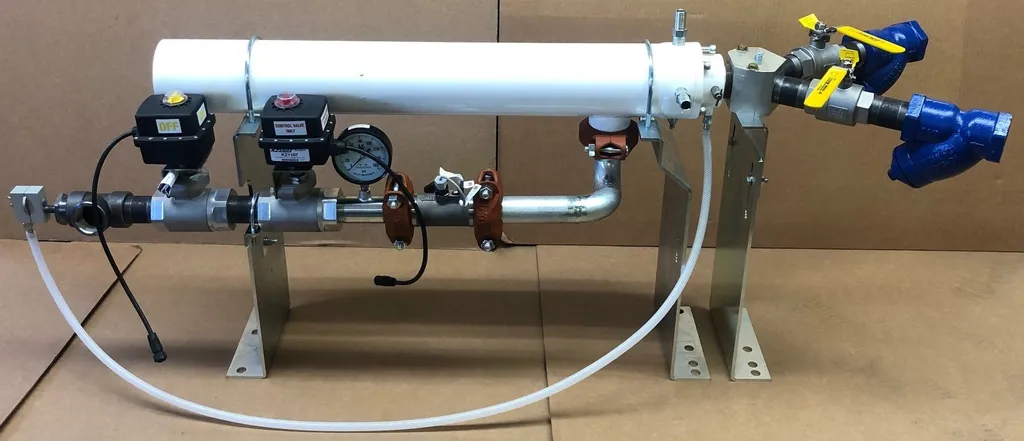Kaltra, an international company rooted in Munich, is making waves across 60+ countries. But what exactly is driving this global reach? It all comes down to their dedication to creating energy-efficient cooling solutions. They manufacture a range of products including chillers, free cooling systems, precision air conditioners, and microchannel heat exchangers. Their target? Data centers and industries where reliability and environmental friendliness are paramount. A crucial part of their offering, and a technology rapidly changing how we think about climate control, is the dx ac unit.
Understanding Direct Expansion Cooling
So, what exactly makes a dx ac unit different? The term “DX” stands for Direct Expansion. In a DX system, the refrigerant directly cools the air, skipping an intermediate step like chilling water. Think of it as a more direct route to comfort.
But why is this direct approach significant? Well, the main advantage lies in its efficiency. Because the refrigerant directly cools the air, less energy is lost in the process. This translates to lower operating costs and a reduced environmental impact. In a world increasingly concerned with sustainability, that’s a winning combination.
Benefits of a DX AC Unit
What are the real-world advantages of choosing a DX solution? Let’s break it down,
- Energy Efficiency, As mentioned, direct expansion cooling is inherently efficient. By eliminating the need to chill water, DX systems minimize energy waste.
- Precise Temperature Control, DX units offer exceptional control over temperature and humidity levels. This precision is crucial for environments like data centers where even slight fluctuations can have significant consequences.
- Scalability, DX systems can be easily scaled to meet changing needs. Whether you require a small unit for a single room or a large system for an entire building, there’s a DX solution that fits the bill.
- Ease of Installation and Maintenance, Generally, DX units are simpler to install and maintain compared to more complex cooling systems. This can save time and money in the long run.
- Environmental Friendliness, Kaltra emphasizes environmental friendliness. Their DX AC units often use refrigerants with low global warming potential, further minimizing their impact.
Applications Across Industries
Who benefits most from this technology? The short answer is many. Direct expansion ACs are versatile and find applications in a wide range of industries.
- Data Centers, These facilities generate immense heat, and require precise and reliable cooling to prevent equipment failure. DX units are a popular choice due to their efficiency and temperature control capabilities.
- Industrial Facilities, Factories, warehouses, and other industrial settings often require robust cooling solutions to maintain optimal working conditions and protect sensitive equipment.
- Commercial Buildings, Offices, retail stores, and other commercial buildings can benefit from the energy efficiency and comfort provided by DX systems.
- Healthcare Facilities, Hospitals and clinics require precise temperature control to ensure patient comfort and the integrity of medical supplies.
- Residential Buildings, While less common than other types of air conditioning systems, DX units can be used in residential applications, particularly in larger homes or in situations where precise temperature control is desired.
Kaltra’s Approach to DX AC Systems
What sets Kaltra apart in the world of DX AC unit manufacturing? Their commitment to innovation and sustainability is a key differentiator. They are constantly developing new technologies and refining existing ones to improve energy efficiency and minimize environmental impact.
Their use of microchannel heat exchangers is a prime example of this. These heat exchangers are more efficient than traditional fin-and-tube designs, allowing Kaltra’s DX systems to achieve higher levels of performance. Moreover, they are also lighter and more compact, making them easier to install and maintain.
Beyond the technology itself, Kaltra also places a strong emphasis on reliability. Their systems are built to withstand the rigors of demanding environments, ensuring consistent performance and minimal downtime. This is particularly important for applications like data centers where even a brief interruption in cooling can have serious consequences.
Future Trends in DX Cooling
Where is the technology headed? The future of DX AC unit technology is likely to be shaped by several key trends,
- Increased Energy Efficiency, Ongoing research and development efforts are focused on further improving the energy efficiency of DX systems. This includes exploring new refrigerants, optimizing system designs, and incorporating advanced control strategies.
- Smart Controls and Connectivity, The integration of smart controls and connectivity features is becoming increasingly common. This allows users to monitor and adjust system performance remotely, optimize energy consumption, and receive alerts in the event of a problem.
- Sustainable Refrigerants, The industry is moving towards the adoption of refrigerants with lower global warming potential. This is being driven by environmental regulations and a growing awareness of the importance of sustainability.
- Modular Designs, Modular DX systems are becoming more popular due to their flexibility and scalability. These systems can be easily expanded or reconfigured to meet changing needs.
In conclusion, the dx ac units are revolutionizing the way we approach cooling, offering a compelling combination of energy efficiency, precise temperature control, and scalability. As Kaltra continues to innovate and push the boundaries of this technology, we can expect to see even more advancements in the years to come. So, next time you’re considering a cooling solution, remember the direct and efficient path offered by a dx ac.


